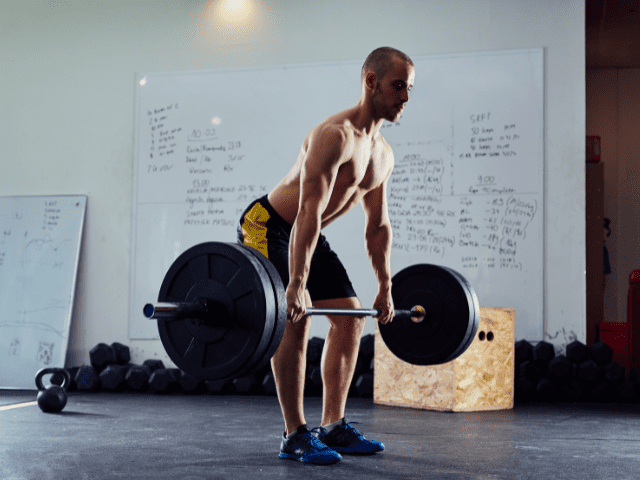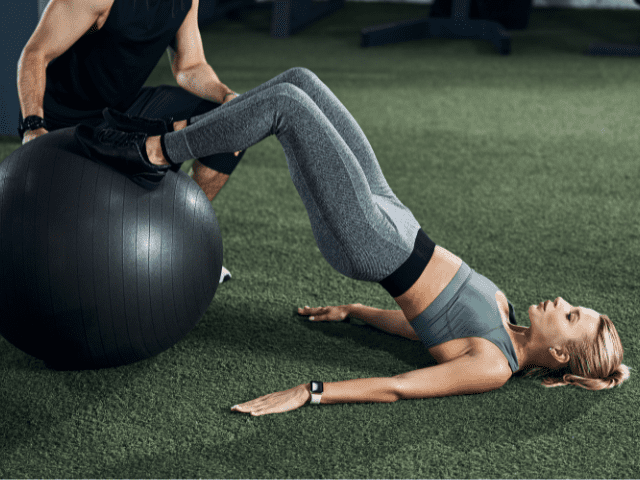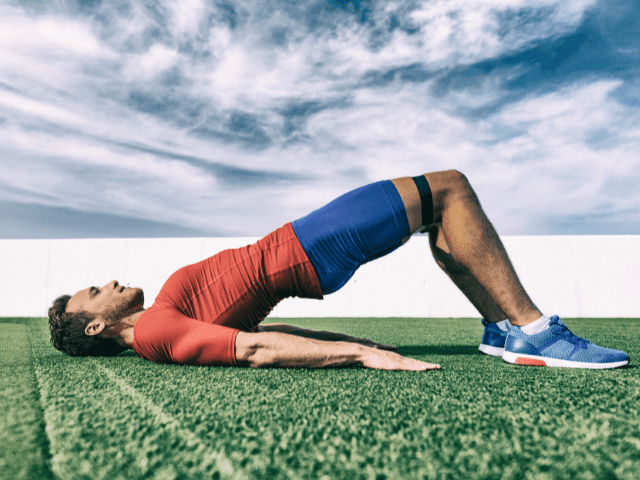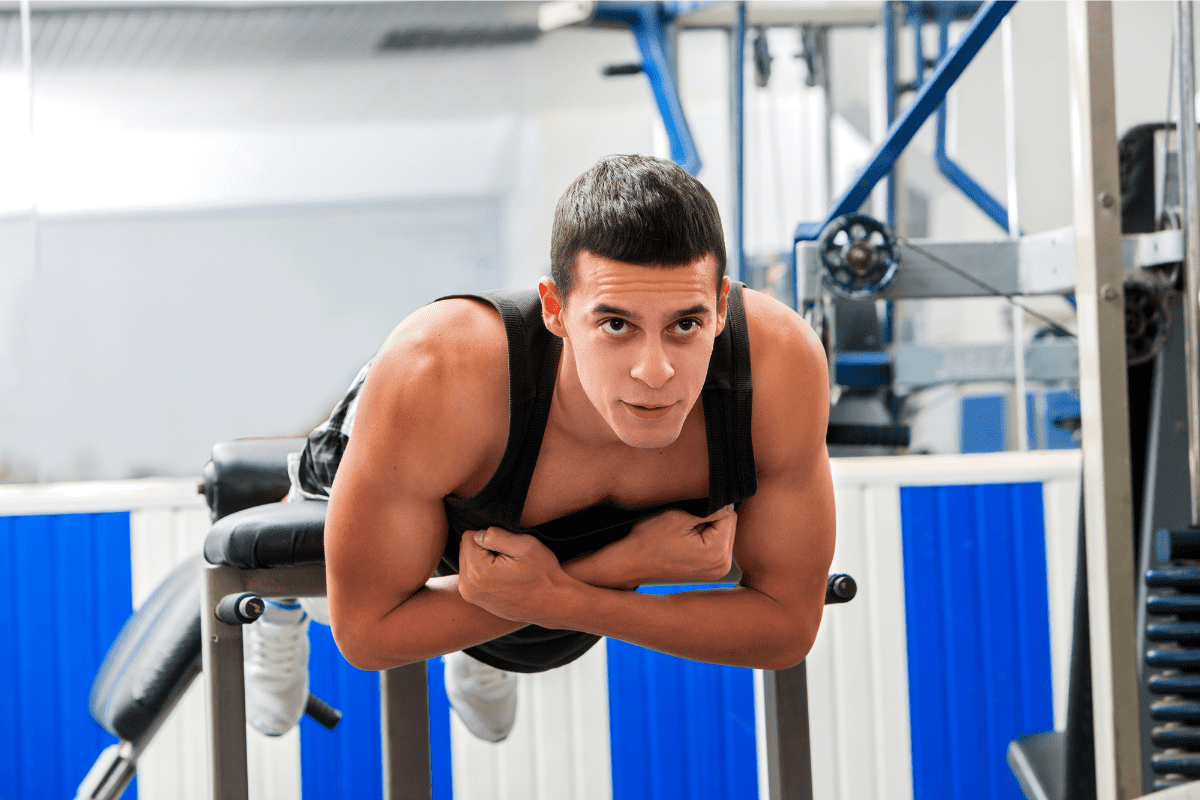11 Hyperextension Alternatives To Train The Posterior Chain
Hyperextensions are an excellent exercise for building posterior chain strength. They’re a bodyweight movement that can be beginner-friendly, but easily loaded and challenging to even advanced lifters.
However, sometimes you may need an alternative for Hyperextensions.
The most obvious reason of which is that you don’t have a Glute Ham Machine. I’ve had Glute Ham Machines in every college weight room I’ve worked in, but I’ve never had one in my garage gym because they can be expensive and take up a lot of space.
Don’t worry though, because you don’t need a Glute Ham Machine to build a strong posterior chain. I’m about to share with you 10 of my favorite Hyperextension alternatives.
Alternatives for Hyperextensions
I’ve tried to make this list of alternative exercises as diverse as possible. There are exercises that use a barbell, dumbbells and even no equipment at all.
Hopefully, no matter what equipment you have or what your lifting experience is – one of these alternatives can serve as a replacement for Hyperextensions.
Romanian Deadlift (RDL)

I’m going to start this list of Hyperextension alternatives with Romanian Deadlifts, or RDLs for short. RDLs are one of the best exercises for developing a strong posterior chain.
They don’t require any big pieces of equipment. Just a barbell and some weight plates and you’re all set. And, unlike Hyperextensions, because you’re holding the weight, the upper body gets some quality work in as well.
How To
- Address the bar with feet shoulder-width apart, and toes straight ahead.
- Use a pronated grip about a thumb length from the start of the knurling.
- Now, with a good flat back, pick the bar up to a standing position.
- From here, put a slight bend in the knees and ‘set the back’ by squeezing the shoulder blades and engaging the lats.
- Brace the core and hinge forward by pushing the hips back.
- The bar should almost drag right down the legs, across the knees and straight down the shins. The whole foot should stay flat on the ground, but the weight should be on the mid-foot to heel.
- Maintain the neutral spine position throughout the descent and once you feel a good stretch in the hamstrings, drive the hips forward (hip extension) and return to the starting position.
Coaching Points
The ‘depth’ that each person gets doing Romanian Deadlifts will be different and absolutely solely dependent upon hamstring flexibility.
Do NOT try to ‘reach’ the barbell toward the ground because you believe the plates should touch the floor. If you have tight hamstrings you may be doing well to get the bar to mid-shin.
Trying to reach the bar to the floor will result in the lifter losing their neutral spine and rounding their back.
Dumbbell RDL
You don’t even need a barbell to do RDLs. The Dumbbell RDL variation works just as well as a Hyperextension alternative.
Step-by-Step Instruction
- Stand with your feet hip-width apart, maintaining a slight bend in the knees.
- Begin by hinging at your hips, pushing them backward, and lowering the dumbbells along your shins.
- Keep your back straight and chest up, ensuring the dumbbells stay close to your legs throughout the descent.
- Once you feel a stretch in your hamstrings or the dumbbells reach mid-shin level, reverse the motion.
- Engage your hamstrings and glutes to pull yourself back to the start.
Coaching Points
During Dumbbell RDLs, it is important for the lifter to maintain a neutral spine, maintaining tension in the abdomen and upper back. Remember to breathe in and hold the breath during eccentric (lowering the weight) and breathe out as you perform the concentric movement (bringing the weight back up).
Single Leg Dumbbell RDL
The final RDL variation I’m including here is the Single Leg RDL. In addition to working the posterior chain muscles, Single Leg RDLs will also challenge your balance and coordination.
Step-by-Step Instruction
- Stand on one leg, holding the weight in the opposite hand.
- Keeping a slight bend in the standing leg, hinge forward at the hip while extending the free leg straight behind you.
- Lower the weight towards the ground while maintaining a straight line from head to extended foot.
- Pause briefly at the bottom without rounding your back.
- Engage your hamstring and glute to return to the starting position, maintaining balance.
Coaching Points
Do not let the weight drift over the midline when doing Single Leg RDLs. You will train for more structural stability if you keep the dumbbell in front of the down leg.
Maintain the arch of the foot. When performing single-leg movements, it is very important to maintain balance to yield all the benefits of single-leg exercises.
It is important for the lifter to maintain a neutral spine, maintaining tension in the abdomen and upper back.
Need a Training Program?
Visit the Horton Barbell Shop and Use Code “HB10” for 10% Off ANY Program!
Kettlebell Swing

Kettlebell Swing is a dynamic movement that focuses heavily on the posterior chain. More beginner-friendly than Olympic lifts, Kettlebell Swings can be included in the warm-up, workout or even a high-intensity circuit.
Step-by-Step Instruction
- Stand with feet shoulder-width apart, holding the kettlebell with both hands in front of you.
- Push your hips back, bending slightly at the knees, and lowering the kettlebell between your legs.
- Powerfully extend your hips and knees, swinging the kettlebell forward and upward to chest height.
- At the peak, your body should be in a straight line from head to heels.
- Allow the kettlebell to swing back down, hinging at the hips, and preparing for the next repetition.
Coaching Points
The Kettlebell Swing is a great movement to train rapid hip extension and flexion. Remember to always keep a neutral spine (DO NOT ROUND YOUR BACK).
Choosing the proper kettlebell weight is important. Heavier is not always better. Because of the rapid nature of the kettlebell swing, the emphasis should be on velocity, speed, and power.
Glute Ham Raise
Glute Ham Raises are basically a Hyperextension combined with a Nordic Hamstring Curl. This might be the most challenging exercise for the entire posterior chain out of all the Hyperextension alternatives I have here
Step-by-Step Instruction
- Position yourself on a Glute Ham Developer (GHD) machine with your feet secured under the roller and your knees just behind the pad.
- Start with your upper body completely vertical, from your knees to your head.
- Begin the movement by slowly lowering your torso forward and downward, maintaining a straight line from your knees through your head.
- When you’ve descended as far as possible with control, use your hamstrings and glutes to reverse the motion.
- Pull yourself back up to the start, squeezing your glutes at the top of the movement.
Coaching Points
One of the common mistakes I’ve seen with Glute Ham Raises is athletes will pull with the hamstrings and not engage the glutes.
What this looks like is the athlete leaves their hips behind and they don’t quite get to perpendicular because they didn’t extend the hips and engage the glutes.
Reverse Hyperextension
If you have access to a Reverse Hyperextension machine then Reverse Hyperextensions can be an excellent alternative for Hyperextensions.
Research has shown that the two exercises have very similar muscular activity and Reverse Hyperextensions tend to be less stressful on the low back for many lifters.
How To
- Grab the handles of the Reverse Hyper Machine and lay your torso across the platform.
- Set up your legs/feet with the resistance (will differ depending upon the machine)
- Keeping your legs straight, raise them up until they are parallel to the floor.
- Squeeze the glutes at the top and then lower the legs back down under control.
Coaching Points
There are specific Reverse Hyper machines. These machines allow you to add weight and lift the legs with added resistance.
If you don’t have access to a Reverse Hyperextension machine, you can use a regular Glute Ham Machine to do Reverse Hypers. To add resistance, you can hold a medicine ball in between your feet.
Banded Good Mornings
I’m not a huge proponent of Barbell Good Mornings (not big on the risk:reward for most athletes), but Banded Good Mornings can work as a sub for Hyperextensions. Especially, if you’re short on equipment and resistance bands are all you have to work with.
Step-by-Step Instructions
- Stand on a resistance band and pull it up over the head and across the back of the shoulders.
- Stand tall with feet hip-width apart, hands holding and securing the band in place.
- Put a slight bend in the knee and pull the shoulder blades back.
- Now, hinge at the hips by pushing the hips back and bending at the waist. Push your knees out slightly as you descend.
- Keep the back slightly arched throughout the movement.
- Continue the hinge until you feel a stretch in the hamstrings.
- Stand back up tall and push the hips forward to the starting position.
- Repeat until all reps are completed.
Coaching Points
Banded Good Mornings can serve as a warm-up movement or as a strength-building exercise, usually as part of a circuit.
Listen to your body. Depending on your hamstring (and sometimes glute or low back) flexibility, you may be able to lower down quite far or not very much at all. The key is to move just to the edge of your range of motion. Don’t try to force anything.
Stability Ball Leg Curl

Stability Ball Leg Curl is a bit more hamstring focused than Hyperextensions, but depending on which area of the posterior chain you’re trying to target they can be a good option.
Step-by-Step Instruction
- Lie down on your back and almost fully extend your legs.
- Place your heels on the ball.
- Drive your elbows into the floor and keep your abdomen tight. Drive your heels into the ball.
- Drive your hips to the ceiling and engage your glutes. Try to create a straight line from your shoulders through your hips to your ankles.
- Keeping your core nice and tight, pull the ball under your butt as much as possible.
- At the top of this movement, keep the glutes engaged and core tight.
- Engaging the hamstrings, roll the ball back until your body is almost fully straight.
Coaching Points
Make sure the stability ball is properly inflated when doing Stability Ball Leg Curls. If it is not, the muscles we are training will not engage fully.
Remember to always squeeze with the glutes and actively engage the hamstrings. Do not round the back and push your belly to the sky. Keep the anterior core locked in throughout the movement.
Glute Bridge

Glute Bridges aren’t going to build the same type of strength as most of the other Hyperextension alternatives, but they work great for warming up the posterior chain prior to a lower body workout.
Step-by-Step Instructions
- Start by laying on your back on the ground.
- Bend both knees to about a 90-degree angle and place both feet flat on the floor.
- Begin the rep by driving your hips up into the air. Try to attain a straight line from the shoulders through the hips and knees.
- Squeeze the glutes at the top of the rep and then lower back down to the starting position.
Coaching Points
As you raise the hips up, try to drive the knees slightly forward. This can help with getting a strong glute contraction and a full extension of the hips. Don’t rush through Glute Bridges. Make sure to pause and squeeze at the top of each rep.
Floor Slider Leg Curl
Similar to Stability Ball Leg Curls, Floor Slider Leg Curls are more of a hamstring-dominant exercise.
Step-by-Step Instruction
- Lie down on your back and bend your knees at about 90 degrees.
- Place the sliders under the heels of your feet.
- Drive your elbows into the floor and keep your abdomen tight.
- Drive your hips to the ceiling and engage your glutes.
- Keeping your core nice and tight, slowly slide your heels away from your body until your knees are almost fully extended.
- At the end range of this movement, your body should be straight, hips up, and core engaged.
- Engaging the hamstrings, pull your heels back to the starting position and squeeze the glutes to resume the starting position.
Coaching Points
One of the most important points about this movement is the surface you are sliding on and the type of slider you’re using.
The furniture slide should freely move with little resistance, I would say carpet is ideal if available. If there is resistance, this may affect your technique and coordination.
Remember to always squeeze with the glutes and actively engage the hamstrings. Do not round the back and push your belly to the sky. Keep the anterior core locked in throughout Floor Slider Leg Curls.
Supermans
Supermans are a simple, but effective bodyweight exercise that focuses on the low back and glutes.
Step-by-Step Instructions
- Lay on your stomach with arms stretched out overhead and legs straight.
- Contract the low back and glutes and raise the chest, arms and legs (thighs) off the ground.
- Squeeze and hold for a one count and then lower back down to the ground.
Coaching Points
Take your time and don’t rush through the movement. Squeeze the top of each rep and lower yourself back to the ground under control. Too often I see athletes just quickly go through the motions with Supermans – focus on each rep to get the max benefit.

Get Shredded… For Free
Get a free workout Monday through Friday, posted right here on Horton Barbell. These workouts are designed to help you get strong, in shape and look great at the beach!
Final Thoughts
Hyperextensions are an amazing exercise and one of my favorite posterior chain movements. However, I also understand that there are situations where you simply can’t do Hyperextensions.
Hopefully, this list of Hyperextension alternative exercises has helped you figure out a different movement that you can use as a substitute.

